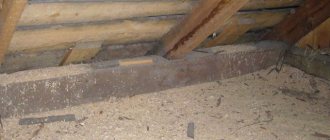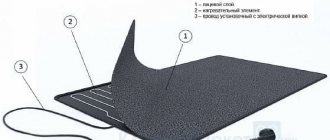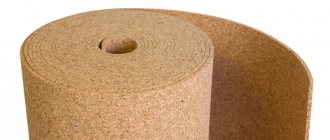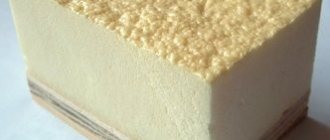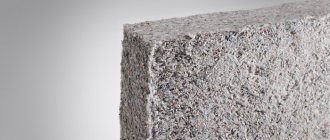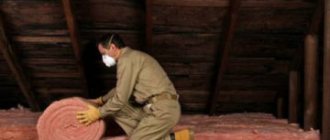The very idea of insulating a house with sawdust cannot but raise doubts, because crushed wood is a fire hazard and susceptible to rotting. Can it be used to backfill frame walls, floors and ceilings? Oddly enough, yes. And if everything is done correctly, the house will last for decades.
Sawdust insulation can confidently be called a time-tested technology. In the USSR it was actively used, which is reflected in SNIP II-A.7-62 “Construction heating engineering. Design Standards" 1962. Moreover, sawdust-fill houses erected in the 19th century still stand and are in use today.
To be fair, it is worth noting that most old buildings have rather thin walls - about 10-12 cm, and in cold weather they have to be heavily heated. In modern houses, the layer of sawdust insulation is much thicker - 30-35 cm, and they fully comply with heat transfer resistance standards. But what makes progressive developers abandon polyurethane foam and stone wool in favor of wood waste?
How to use sawdust for insulation
Sawdust began to be used long ago in the construction of houses, then they were combined with clay and finished off the floors in rural houses. The mentioned ceilings were of good quality, served for a long time, nothing disturbed their cover, they had many advantages: low cost and good thermal insulation.
Taking this into account, the current industry began to produce effective materials for construction with similar properties - concrete with shavings, wood blocks, wood concrete.
Sawdust is also used in low-rise buildings today. Often these raw materials are of interest to individuals who want to insulate walls, ceilings and floors with shavings, and also use them as needed for other purposes.
It is difficult to find in our time a more inexpensive heat-saving material, which is sawdust. By mixing cement, gypsum or lime with shavings, you get very economical insulation for various structures.
Insulation process technology
For effective thermal insulation of the roof with sawdust, it is necessary to carry out high-quality preparatory work. Wood shavings must be treated with specialized preparations aimed at protecting against fire and rodents.
During preparatory work, the material is dried, adding fluff lime and copper sulfate to prevent them from the appearance of living creatures.
The process of insulating a cold attic with sawdust is as follows:
- The wiring is insulated and hidden in metal pipe casings, and the remaining exhaust communications are either covered with crushed stone or covered with fire-resistant seals.
- Using wood chips and wooden boards, formwork is laid on the subfloor.
- To prevent the appearance of moisture in the sawdust, a profiled membrane is spread on the floor (for waterproofing) and secured with a construction stapler.
- A thermal insulation mixture (sawdust with clay or lime) is laid out on the surface of the waterproofing material to a layer of 30 centimeters, pre-mixed in small portions. When using a dry mixture, it must be compacted.
- The insulation is carefully leveled and left for 2-3 weeks to completely dry and shrink.
- When the insulation layer has completely dried, it is again covered with waterproofing, which is secured with a stapler.
- After all the work has been done, the flat roof is laid.
The process of insulating an attic using a mixture of sawdust and clay.
According to experts, the ideal drying time for the mixture is from 2 to 5 weeks, since the thermal insulation efficiency depends on its complete drying. If you don’t have time to wait for a long time, dry mixtures are the best option.
We process sawdust before insulation
Sawdust is used to make thermal insulation; it is prepared in advance in a special way. When an antiseptic is not used and there are inclusions of impurities in sawdust, two shortcomings arise: the flammability properties increase and rodents begin to inhabit them.
Therefore, before starting work, the shavings are mixed with cement or gypsum, lime, and then moistened with an antiseptic substance. The resulting mixture acquires suitable fire safety characteristics and is unacceptable to various pests.
Binding components
The choice of the optimal binder is made taking into account what component is available and what characteristics it has. The most commonly used materials are:
- Gypsum. The solution sets quickly, so it is often used as a binder. Within 10 minutes, the mixture of sawdust and gypsum hardens, and after a couple of hours it dries completely. The resulting insulation is durable and lightweight. The so-called bridges of cold and all kinds of voids do not appear in it. But if this mixture is used to insulate an external wall, then it is additionally required to cover it. Moisture will contribute to the destruction of thermal insulation from a solution of sawdust and gypsum. This type of insulation is more suitable for internal thermal insulation of buildings.
- Cement. This component is more durable, but more difficult to work with. Sawdust and cement mortar set within 24 hours. This solution is often used for plastering the outside of the house. After the binder component hardens, even water flowing down the walls will not be able to destroy the sawdust-cement layer. The solution is also used to fill ceilings, interior and underground spaces. Cement is gray in color, but it can always be diluted with color and then there is no need to additionally apply decorative plaster to the surface.
- Clay. This is one of the cheapest binder components. But there is a significant drawback: the mixture is completely unstable to humidity. After drying, the solution significantly loses weight as water evaporates. Such insulation is in no way inferior in strength to cement-sawdust (gypsum-sawdust) thermal insulation.
- PVA glue. This component is used as a binder for the further use of insulation in places where frequent exposure to moisture occurs. The glue reliably grips the sawdust, resulting in a durable, hard layer that is not subject to corrosion and rotting. Its strength does not decrease over time, and polyvinyl acetate (hardened adhesive) has excellent steam permeability.
- Manure. A long-forgotten component as a binder, but previously it was used to insulate households. The strength of manure is not as high as that of other binders, but after drying, the manure solution forms a crust that has a porous structure. Therefore, such a thermal insulation layer has excellent thermal conductivity parameters. But it is additionally required to cover it with cement or gypsum mortar or cover it with boards.
- Lime. This component allows you to obtain a durable thermal insulation layer. The mass of sawdust with lime becomes more dense in consistency. This allows you to obtain insulation that will not deform over time. Heat loss is significantly reduced, and rodents in such thermal insulation do not make moves or make nests inside.
The solution is also used for the production of slabs, mats, and sawdust blocks. Their thermal insulation properties are no worse than mineral wool. To make them, they use special molds that you make yourself.
Do-it-yourself insulation with sawdust (step by step)
Often, shavings are used to create insulation in a one-story building.
To make chip insulation on your own, you will need to get:
- Cement mixture, shavings, lime;
- Watering can, shovel;
- Wood antiseptic – boric acid, copper sulfate;
- Container for mixing.
The thickness of the heat-saving layer is determined by 2 rules: the local climate and the purpose of the room.
You should know. When the building will be used only in summer conditions, then an insulation layer of 25 cm for the ceiling with overlap and 15 cm for the walls is sufficient.
When you plan to live in the house for a year, then you need to add the thickness of the ball to 30 cm. To do this, you will need to add racks, they form additional space for backfill.
What tools and materials will be needed
Floor insulation with sawdust is carried out in several ways; accordingly, in addition to the sawdust-shaving mass, various auxiliary materials and binders will be required. First of all, you will need to buy:
- Fire retardant chrome protectant;
- Copper sulfate.
Today this is the best pair against fungus and fire.
To insulate wooden log floors, sifted sawdust is used with the addition of PVA-based binder and wood glue. In addition, you will need a vapor barrier film, a stapler and tape for gluing the panels.
Concrete floors in a private house are most often filled with sawdust concrete. You will need cement, liquid soap and a primer.
The tools you will need are a small concrete mixer for preparing sawdust concrete. To level the insulation layer you will need a plaster rule and a spatula.
In other cases, a metal container, a bayonet shovel and a sprayer spraying liquid binder will be sufficient.
Selection of sawdust
There are several types of sawdust that differ in size. There is material: small, medium and large fractions. It is best to choose the middle fraction, since small sawdust is difficult to work with, and large sawdust cannot provide high-quality insulation.
- It is advisable to choose sawdust that was obtained by sawing dry wood in carpentry; they do not require additional preparation and do not rot.
- After acquiring sawdust that was formed after sawing round timber with natural moisture, you need to dry it. When it comes to selecting the type of tree, it is better to choose shavings from coniferous trees.
The resin contained in them prevents the appearance of any insects in the sawdust. Larch is a great choice for insulating a bathhouse.
It is necessary to ensure that there are no foreign impurities or any debris in the sawdust. If it is found, then you need to sift the sawdust using a sieve. Large debris items are manually selected.
Characteristics of insulation
Sawdust is, due to its natural origin, a healthy insulation material that is a product of the woodworking industry and is purchased at sawmills. This material was used to insulate a private house back in Rus', and continues to be used now. Sawdust has a number of advantages that distinguish it from other insulation materials:
- Price. Often such material is given away for free, since it is waste from sawmills and sawmills. The cost in such cases only includes delivery to the construction site.
- Harmlessness. They do not cause poisoning or allergic reactions, as they do not produce toxic fumes.
- Thermal conductivity. Sawdust provides excellent thermal insulation due to the fact that it has a huge number of air cavities. Compared to ordinary wooden beams, they have lower thermal conductivity.
- Organic. The shavings retain all the properties of wood, thanks to this they allow moisture and air to pass through well.
- Installation. To insulate a roof with sawdust, you do not need specialized knowledge or tools. Anyone can prepare the mixture and lay it on the ceiling.
Surface preparation
Before you start insulating the floor with sawdust, you need to prepare:
- The plane of the beams is covered with boards. The thickness of the timber should be at least 30 mm. It is limited by the distance where the beams are located between each other.
- The planks are laid very close to the beams, driven in with nails or screwed in with self-tapping screws.
- Before work, boards with beams are treated with an antiseptic to stop the possible formation of fungi and to protect the structure from insects.
- The holes are filled with construction foam.
- In the attic, the ceiling is covered with a layer of vapor insulation. In its absence, it is possible to use roofing material. Vapor insulation is secured with a stapler with allowance for walls and beams.
Wall pie device
One of the most important factors when building a house is the correct design of the walls. It doesn’t matter whether you carry out all the construction work yourself, or order a ready-made option, in any case, you must know the correct composition of the “pie” of a frame house.
Layers of the correct “pie” of the wall:
- Frame made of wooden beams.
- There should be insulation between the racks.
- Fiberboard (OSB).
- Horizontal sheathing.
- Insulation.
- Multifunctional membrane.
- Vertical lathing.
- Finishing.
- Vapor barrier.
- Internal lining.
wall pie
Alternative option
If you use sawdust as wall insulation, you need to make a lathing.
First of all, you need to mount the frame. Then, at a certain distance, you need to attach wooden slats to the wall and lay the sheathing on them.
Sawdust mixed with cement
To insulate the ceiling with sawdust, you will need to dilute it with cement. The resulting solution will be capable of becoming similar to concrete when hardened. This method is best used on concrete floor surfaces.
The insulation solution is prepared in the following order:
- In a large container, lime is mixed with the addition of cement in proportions of 1:1. Then sawdust is thrown into the solution - 10 parts and mixed thoroughly. Water is added to form the desired fluidity. To determine the correct thickness, take a small amount of the mixture in your hand and squeeze it in your palm. After unclamping, the lump should not disintegrate and water should not flow out;
- The openings in the ceiling are filled with a mixture 20-25 cm thick.
The advantage of the described method is that concrete with sawdust will take less time to harden than clay with sawdust. This makes it possible to use this method when it gets cool in autumn or spring.
How to insulate walls with sawdust
Insulating walls with sawdust is considered an effective method of heat preservation and noise protection. We offer a step-by-step description of the popular thermal insulation method.
- To ensure fire safety, all potentially hazardous areas are covered with non-flammable material. We are talking about sockets, switches, chimneys, heating system wiring. Electrical wires are placed in metal tubes with a thickness of at least 3 mm .
- When insulating walls, it is necessary to construct a frame to hold the insulation. The frame consists of wooden slats with sheathing.
- Small wood shavings should be dry and free of mold. Among all the waste from sawing and processing wood, coarse sawdust is suitable for insulation . The thermal insulation mixture is prepared according to the principle described in the previous section; the thickness and proportions of cement, water, lime and boric acid are also given there.
- After mixing, the insulation is poured into the frame to the level of the sheathing. A small construction secret is to sufficiently compact and compact the insulating material to prevent subsidence of the layer in the future.
If you are interested in insulating a frame house with sawdust in the form of arbolite slabs, we will tell you how to make and install them. First, you should soak dry sawdust in copper sulfate . Afterwards, combine with cement in a ratio of 10 to 1. The mixed components are diluted with water until a dense mass is obtained that does not disintegrate after squeezing in a fist, is wet to the touch, but does not release moisture. To properly insulate the walls, first install a layer of waterproofing , and apply a solution with sawdust on top of it.
Insulation with a mixture of shavings and clay
Before mixing, sawdust should be carefully prepared. To make a solution, you need to follow the necessary procedures:
- Water is poured into 5 buckets of clay. The clay is given time to soak, after which it must be mixed with water to form a homogeneous mass. Sawdust is poured into the container and clay is added in small quantities. The resulting substance should be of medium thickness;
- The ceiling plane is covered with glassine or film, which is secured with a stapler. A mortar with a thickness of at least 5 cm is applied for summer buildings and 10-12 cm for winter buildings. The mixture is easily compacted. It dries for a few days, and after 3 days the cracks become clogged. This is done with mortar or clay only. The insulating layer is allowed to dry.
What will be the price for sawdust insulation? There is a price of 100-400 rubles - a conditional price, the master calculates the final cost on the spot.
Using sawdust to insulate various parts of the house
Each part of the building uses its own technology of thermal insulation work. It is important at this moment to avoid mistakes and to insulate the house in accordance with all the rules.
Walls
If the walls are made of concrete or brick, and the structure is hollow inside, most often a mixture of sawdust and lime is poured there. Due to the design features, it is not possible to pour the solution or lay mats inside. For frame houses, on the contrary, it is more advisable to use slabs. To thermally insulate the outer wall, the solution is poured using the sliding formwork method.
Floors
For floors made of wood, insulation can be done using any of the methods. If the beams are concrete, wooden logs are first laid, and then the space is filled with sawdust mortar. It is better to make a solution from clay or cement. The clay mixture is harder and therefore more durable; sawdust concrete is much easier to prepare and pour.
Roof
Different thermal insulation technologies are used for the attic, attic and roof. The most common problem that arises after roof insulation is the formation of condensation, so make a plan in advance for working with the ventilation system. The characteristic features of the binder components are of no small importance.
Ceiling
If the ceiling is concrete, it is sheathed with slabs or plastered with a thin layer of mortar. For a wooden ceiling, all insulation options are used, even pouring. But most often a mixture based on PVA glue is used, since the load on the ceiling lining of the insulation is minimal. It is not recommended to add lime to sawdust for attic floors. Lime powder releases a large amount of heat when heated. This increases the risk of fire. It is better to add tobacco and broken glass to the sawdust.
Reviews
Let's consider reviews about sawdust insulation. One man shared that one of his friends built a house in one large city. That man knew about construction issues; he used masonry resembling wells and filled them with a clay mixture with sawdust.
As a result, it turned out that he got almost nothing insulating material. The house came out very warm in winter and cool in summer.
Alexander, an experienced builder, shared that no one would argue about ceiling insulation - this is a popular and useful thing. In winter, such a ceiling retains heat, and in summer it is cool in such a house. This results in energy savings. In general, many reviews talk about the benefits of this insulation for house ceilings.
Preparing for insulation
Preparatory work for joist floors, which are usually the majority in private homes, comes down to thoroughly cleaning the insulated space, sealing cracks and holes, and treating the board lining with antiseptics and stains.
Dry mix of sawdust and cement
In any case, before laying sawdust insulation, it is necessary to check the subfloor for water leakage from the street and for properly functioning vents. In a private house, a floor without ventilation and additional insulation is doomed to rot.





